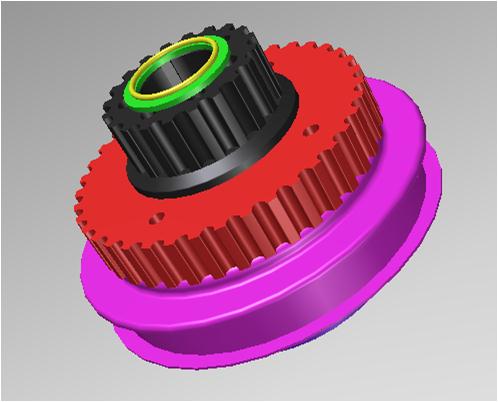DISCUS with Enhanced GD&T
In a news release at CADWire, I noticed that the DISCUS people added GD&T capability to their tool…
In a news release at CADWire, I noticed that the DISCUS people added GD&T capability to their tool…
If you’ve been paying attention, you may have seen the news on the specific plans for Adobe Acrobat and its support for 3D CAD… The good news is that a US-based company, Tech Soft 3D, took ownership for the development and support of Adobe’s 3D SDK. Adobe will continue to support viewing of and interaction with 3D data within its applicable products, including the Acrobat Reader software.

There was an interesting conference on Model-Based Enterprise in Colorado. About 120 people from the major aero, auto, and PLM companies showed up to discuss better ways of helping engineers collaborate and share technical data packages (TDP).
It’s interesting to see all of the competing “neutral” formats for 3D CAD — STEP, JT, RH, PRC, etc.
It’s pretty clear that the notion of MBE and TDP is starting to gain acceptance.
A very nice 2.5 minute time-lapse video that shows the assembly of a Boeing 737 for Southwest Airlines
Most people know that Adobe wants to make Acrobat the universal tool for all file formats on the web. Thus, a few years ago they started to include technology to handle the myriad of 3D CAD formats, such as Catia, Pro/E, NX, etc. After fumbling with some half-baked tools from Right Hemisphere, Adobe decided to acquire the premier company that made CAD import libraries: TTF. The TTF-developed format, known as PRC, was incorporated in the tool known as Acrobat Pro Extended (APEX).
Many organizations pursuing the model-based enterprise (US Army, Boeing) started adopting APEX as a key enabler. They had grown tired of the unfulfilled promises of STEP, and they were pleased to see a tool that could fully view 3D PMI. As a result, the PRC format has emerged as sort of a de facto standard for sharing CAD models.
In Q4 2009, Adobe decided that trying to keep up with all of the dynamic 3D formats was too much for a company creating tools for tens of millions of users. Thus, the word on the street is the they will continue to embed PRC in Acrobat, but they are spinning-out the technlogy to one of their 3D partner companies, This company will continue to develop the PRC technology and Adobe will license it back and use it in their Acrobat tools.
This sounds like a win-win situation to me.
While there aren’t statistically significant research reports available, the general word on the streets is that PC-DMIS represents greater than 50% of the marketplace.
Does the future of a all CMM programming all run through this very expensive software package?
There was a recent research report sponsored by NIST and a large aerospace company, which concluded that the suppliers don’t see much benefit from the model-based enterprise (MBE).
I can understand the conclusion… While MBE can help the OEM engineering department because it reduces time and labor spent for drawings, as it is currently practiced, it adds to the workload of supplier. Stating it another way: OEMs treat suppliers in a manner similar to the dangerous way that Obama treats businesses — don’t know how they work and don’t care.
Spatial Technologies, the CAD engine developer that is owned by Dassault, has been floundering for years.
The word on the street is that Spatial is going into “maintenance mode” and there won’t be many enhancements to the ACIS 3D library.
These are two acronyms you probably haven’t heard too frequently, but you’ll start to see on a regular basis.
TDP is short for Technical Data Package. The model, drawing, and specs that define the part.
MBE is the Model-Based Enterprise, which is the way to share a richer more inetelligent TDP.
Both of these inter-related topics are starting to gain momentum.